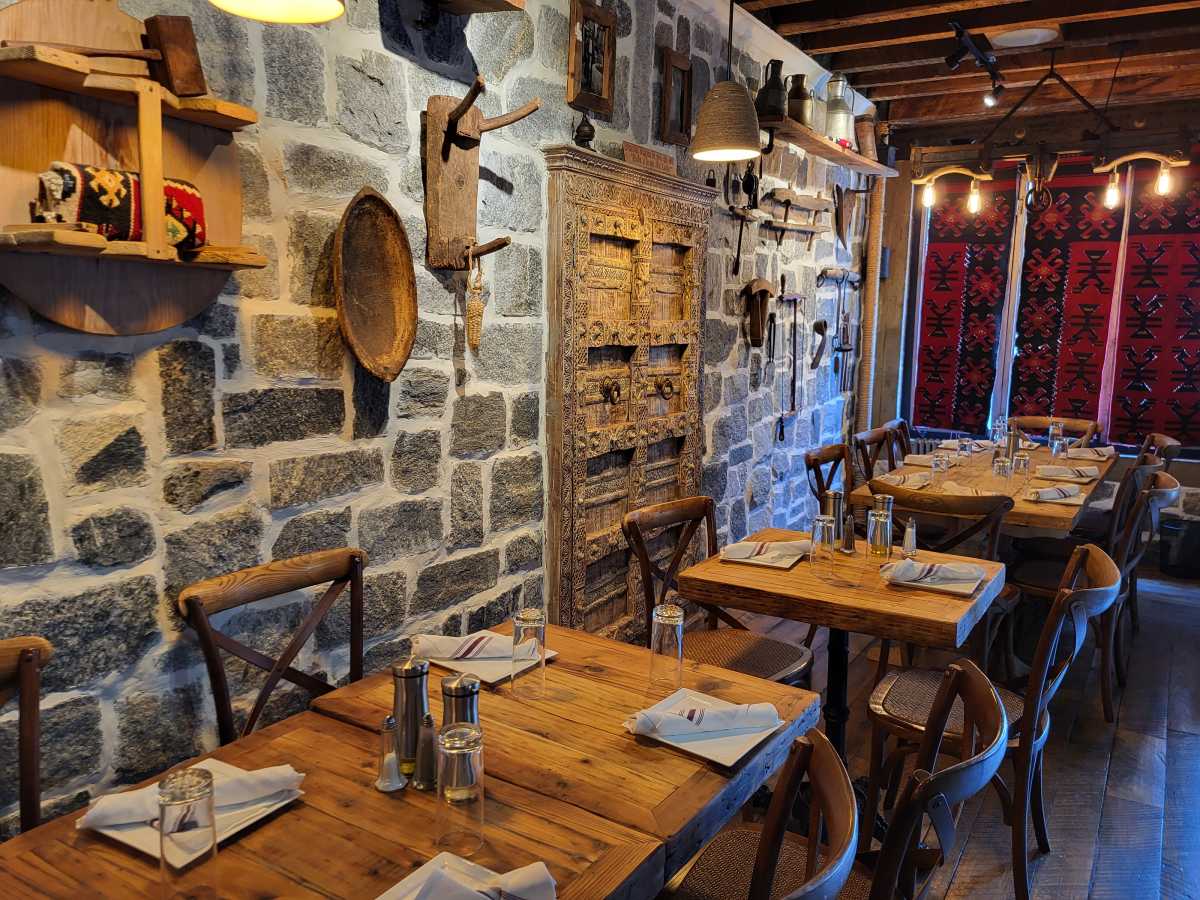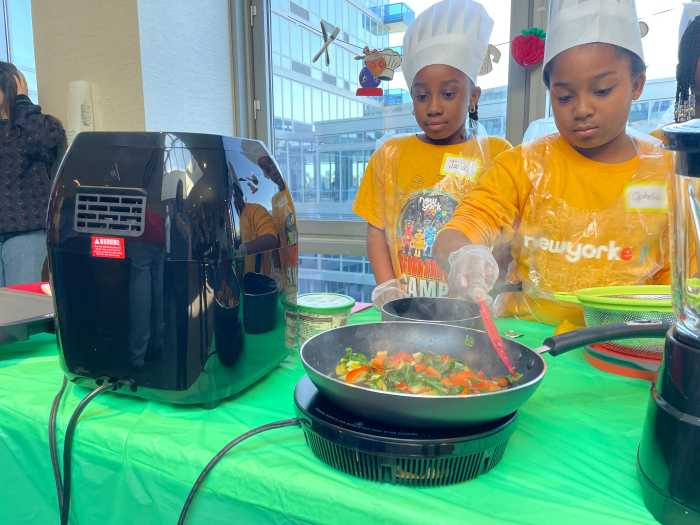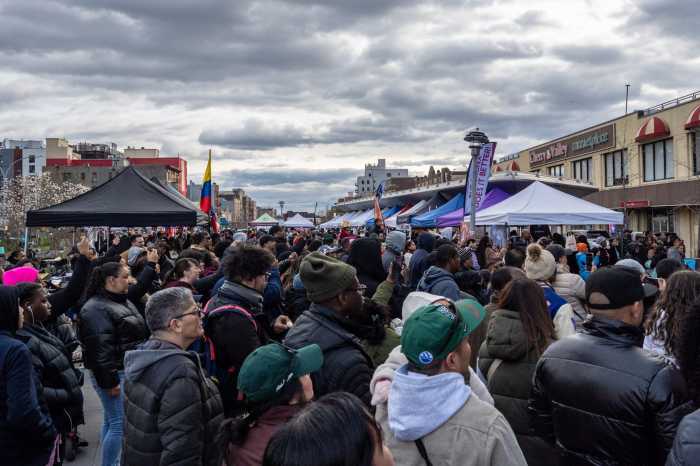Everyone knows that the Bronx has great food — but only three Bronx restaurants made this year’s list of the 100 Best Restaurants in New York City by New York Times food critic Pete Wells.
On the list, all the way up at #6, is La Piraña Lechonera, a trailer on East 152nd Street that received a three-star review from the Times in 2022.
Also included was 188 Bakery Cuchifritos in Fordham Heights, which serves Dominican and Puerto Rican specialties and made the list at #86.
The third was the Albanian restaurant in Little Italy, Çka Ka Qëllu, which made the list at #92 — up from #94 last year — and has other locations in Manhattan and Stamford, Connecticut.
While one might wonder why only three Bronx restaurants are represented on the Times’ list, it’s definitely worth celebrating the few that made the cut. And as a Bronx Times reporter who came into journalism after working for about nine years as a line cook and chef, I gleefully assigned myself to visit these three notable places and report back.
My first visit was to Çka Ka Qëllu, located on Hughes Avenue, next door to the back side of the Arthur Avenue Retail Market. Wells, who apparently visited both the Manhattan and Bronx locations, suggested that to call them “cozy” would be an understatement.
“Both locations look like roadside inns from another century, and after putting away platters of veal sausages, creamy dips, stewed beans, soft polenta and Albanian tres leches cake, you may be disappointed to find out that there are no featherbeds and fireplaces waiting upstairs,” he wrote in the restaurant’s description for the best list.
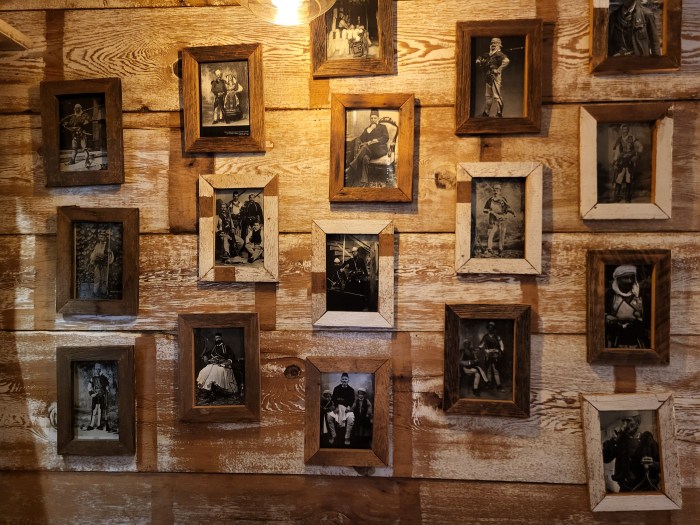
On my late April visit to the restaurant, I totally agreed. Stepping in the doors was like being transported to a slower, simpler time. Wooden beams line the ceilings, and the walls are made of rustic stone. Wood-framed black and white photos cover the walls, and traditional Albanian outfits hang in glass display cases.
On a separate visit to interview the owner, Ramiz Kukaj told me that the photos are copies of 19th century portraits that he reproduced while visiting Kosovo. Kukaj joked that he has smuggled back so many Albanian artifacts that he sometimes has to leave his own luggage behind.
The restaurant’s name translates to “whatever we have” — evoking the feeling of dropping by a friend’s house for dinner and eating whatever they have around, according to server Gent Hashimi, who said he immigrated to the United States from Kosovo only about a year ago.
Hashimi said one cultural difference, in his view, is that servers at American restaurants seem to hate their jobs and don’t truly care about guests. You won’t find that attitude at Albanian restaurants. At an Albanian restaurant, staff will bend over backwards to please diners and make sure they are happy, comfortable and well-fed.
What I ate
As someone who is shamefully late to the Albanian food scene, I asked Hashimi for some recommendations during my visit. I wanted to try the foods that were most illustrative of the cuisine, the ones that the place takes most pride in.
Hashimi recommended a spread that did the job — and was laughably unreasonable for one person to eat. I started with two smaller plates: ajvar ($4) a roasted red pepper dip served with bread, and fli, a multilayered pastry that he said is on every Albanian table.
The bread accompanying the ajvar was exceptional, and the dusting of black soot on the bottom proved its freshness. It was a round loaf with a nice crust and easily tearable texture. The ajvar was a thick paste with concentrated flavor, a little smoky and sweet.
The fli ($9) came in a neat triangular slice, crispy on the outside with what Hashimi said were about 30 layers of eggy savory crepe with no filling. It tasted a little like cheese and onion, although I have no idea what was actually folded into the crepes. The fli was served alongside a wedge of feta cheese and pickled green tomato.
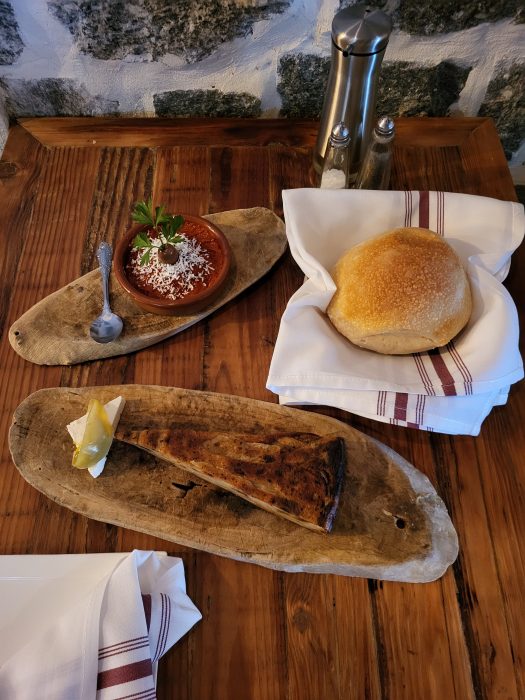
Next, I tried what is said to be the most popular dish across all locations — a northern Albanian dish called tava kosi ($20.50), a comforting pot of saucy rice, yogurt and lamb that came in a steamy clay pot. The lamb was so tender, I could eat it with a spoon. The rest of the dish was creamy, pillowy soft and lemony, with a texture more like polenta than rice and a nice crust around the bottom and sides of the pot. It was a little sweet, a bit unusual and very delicious.
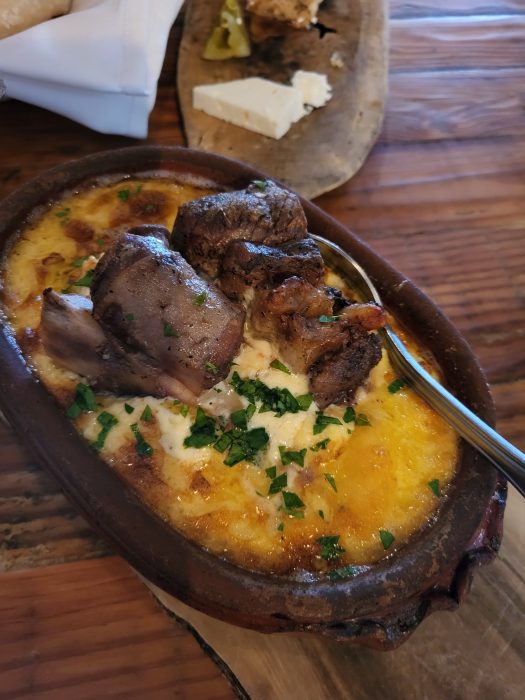
The mixed grill came next, with three different types of veal sausages and a little bit of cabbage slaw. The five finger-length, rustic sausages were very tender and juicy with no casing. The plate also included a slightly spicier and firmer sausage with casing, cut lengthwise. A smashed meatball was also very juicy, with a smooth texture. All the meats were shaped by hand and grilled to just done.
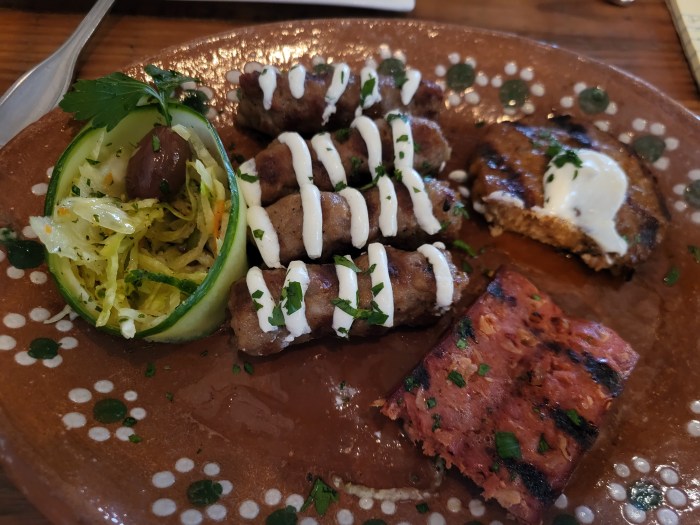
Just as I was ready to take off the rest of the day and nap, Hashimi said, “I’m gonna make you an Albanian coffee, and you’re not gonna say no.”
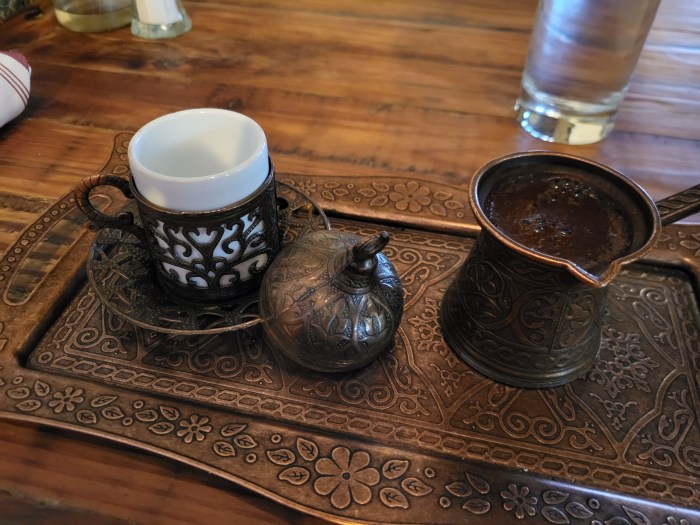
The coffee was beautifully presented in a tiny pot with a long handle, alongside a small lidded cup. Hashimi instructed me to pour only half at a time. The Albanian coffee was rich and not as bitter as it appeared to be, with a good amount of sediment and a velvety, completely dark foam on top. It was a welcome change of pace for me to have coffee in a beautifully presented, ceremonial way, rather than mindlessly gulping my morning cup.
Everything from the wood and ceramic serving plates to the music to the museum-like back room, which is opened up when more capacity is needed, the restaurant offers so much more than food, and throughout my time eating at Çka Ka Qëllu, I sensed a cultural pride and care for guests that is hard to match.
Meet the owner
Kukaj, who opened Çka Ka Qëllu in late 2017, uses his restaurant to proudly showcase not only the cuisine of his country but also the collection of artifacts hauled back from his visits to Kosovo.
Kukaj, who has lived in the United States for almost his whole life but still has family in Kosovo, said he wishes his cuisine held more prominence in the culinary world. “For some reason, Albanian food can’t go too far,” he said.
But high praise from the New York Times, over 24,000 followers on Instagram and past visits from Albanian music stars Dua Lipa and Action Bronson prove that Kukaj has tapped into something big.
Albanian food was born out of the struggle to survive during difficult times, according to Kukaj. Between wars and during times of poverty, people had to get creative with different ways to prepare basic ingredients. Despite the hardships, flour and cheese “were always there,” he said, so much of the cuisine revolves around fresh, simple ingredients, often prepared on the grill.
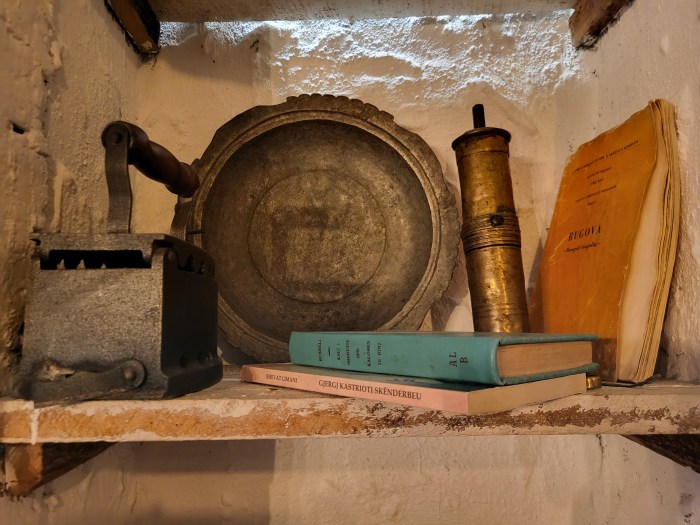
When Kukaj opened Çka Ka Qëllu, he had no background in cooking or small business — but he knew exactly what the place needed to be.
His goal was “to make sure that I stay very authentic,” he said. “I did not have to invent any menu.”
From what he can tell, guests seem to love it. Across the three locations — Manhattan, the Bronx and Stamford — Kukaj sees all kinds of people, mostly non-Albanians, enjoy the food and the cultural experience that comes with it.
But things are tougher than ever in the post-COVID-19-pandemic restaurant world. Kukaj called the industry “extremely tough” and “absolutely insane,” especially since labor costs have soared.
But to Kukaj, it means a lot for his restaurant to be recognized by the Times, food bloggers and others who declare Çka Ka Qëllu one of the best places to eat in a city full of outstanding options.
“It’s a great thing,” he said, adding that he does usually see a boost in business following media attention — but “it’s a short bump.”
For now, Kukaj feels the restaurant represents his culture proudly. “If I opened an Italian restaurant, I would not get that satisfaction,” he said.
If you’ve visited any of the three Bronx restaurants on the Times 100 list — La Piraña Lechonera, 188 Bakery Cuchifritos or Çka Ka Qëllu — send us your feedback and tips for what dishes to order. We would also love to hear recommendations for Bronx restaurants that should be on the list!
Reach Emily Swanson at eswanson@schnepsmedia.com or (646) 717-0015. For more coverage, follow us on Twitter, Facebook and Instagram @bronxtimes

